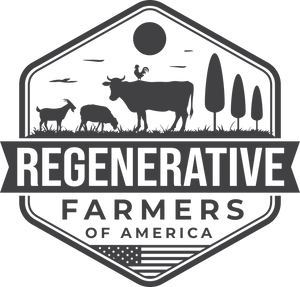- No products in the cart.
My name is Dana deRiancho, and I’m currently a senior at Louisiana State University. For as long as I can remember, my life has been shaped by what I eat. I grew up on a farm and helped my mother shuck corn, fold blueberries into muffin batter, and put up canned tomatoes for the winter. When I finally branched out from my tiny rural town, I was surprised to learn how many people my age hadn’t learned these same skills, and how so many relied on fast food and processed snacks to get them through the week. I never blamed them personally, but rather the food system that seemed to be failing them. After graduating from culinary school and working as a chef for several years, I decided to return to school to study nutrition and food science. I wanted to embolden the public to cook more, and to choose tasty, wholesome foods along that journey. A key part of my philosophy is that healthy, delicious food should be accessible to people from all walks of life, and you shouldn’t need a science degree in order to become empowered and improve your diet. So much of the nutrition information out there is confusing and contradictory, or is simply not written for the common audience. It’s no wonder that people feel confused about what to eat! As a student in the up and coming food science field, I aspire to help the public navigate these murky waters.
One of the many exciting privileges of being involved with the agricultural college at LSU is an exposure to innovative new food products, such as Cahokia rice. This long-grain rice is a strain naturally isolated to contain high protein levels, without being genetically modified. Cahokia rice was first introduced to me by a fellow food science student who is currently testing its properties in baking, and early sensory panels have been promising for this application. Farmers of this rice are also looking into having its glycemic index assessed at the Pennington Biomedical Research Center here in Baton Rouge.
I would certainly encourage this investment, because if the rice does in fact have a low glycemic index, this would be fantastic news for carbohydrate conscious consumers. Foods ranking low on the glycemic index are absorbed and metabolized slower, which keeps insulin levels from spiking and provides greater satiety after a meal. The American Diabetes Association recognizes the important influence that low glycemic foods can have on patients, and encourages all diabetics to integrate this knowledge into their diet plan. There is also preliminary evidence to support that choosing low glycemic foods over their higher glycemic counterparts may reduce the risk of developing diabetes later in life. The glycemic index is a useful tool for all of us, and particularly for those who have already been diagnosed and are learning to adjust.
When you receive a diagnosis, it doesn’t just affect your eating patterns. The decisions we make about which foods we eat are about so much more than sustenance. During times of celebration, food helps to bring family and friends together. Food is also a source of comfort and familiarity through the hard times. It is a way to maintain culture, to show pride in where we come from and to celebrate the generations that came before us. Adapting to a new diet can be isolating and scary, because there are so many emotions and joy attached to our meal times.
So how does one strike a balance between maintaining good health and still finding a reason for celebration in our food choices? Enjoying Cahokia high protein rice products is a great way to update old family recipes and to ease into a new way of eating. If you come from Cajun country where I now live, eliminating rice from your diet would be unthinkable. It’s used as a base for so many of the foods that we love, like jambalaya and etouffee. Unfortunately, Louisiana also has some of the highest rates of obesity and its related illnesses. When compared to standard white rice, Cahokia high protein rice is twice as high in protein and easier to digest. This is a simple exchange that is easy to integrate into the dishes you already enjoy. And, it’s delicious to boot! Cahokia sent me samples of both their white and brown high protein rice, and they both cooked up fluffy and fragrant. If you’re still feeling uncertain of where to begin, there are lots of tasty recipes to be found on the Cahokia rice website under the Recipes tab! It’s a great place to draw inspiration from, and there are even recipes that can help satisfy your sweet tooth while still receiving the benefits of high protein rice. Eating healthy no longer has to be a chore that you dread, but rather just one of the many ways you care for yourself and strive towards a long and happy life.
Sources:
BeyondType
Diabetes.org














